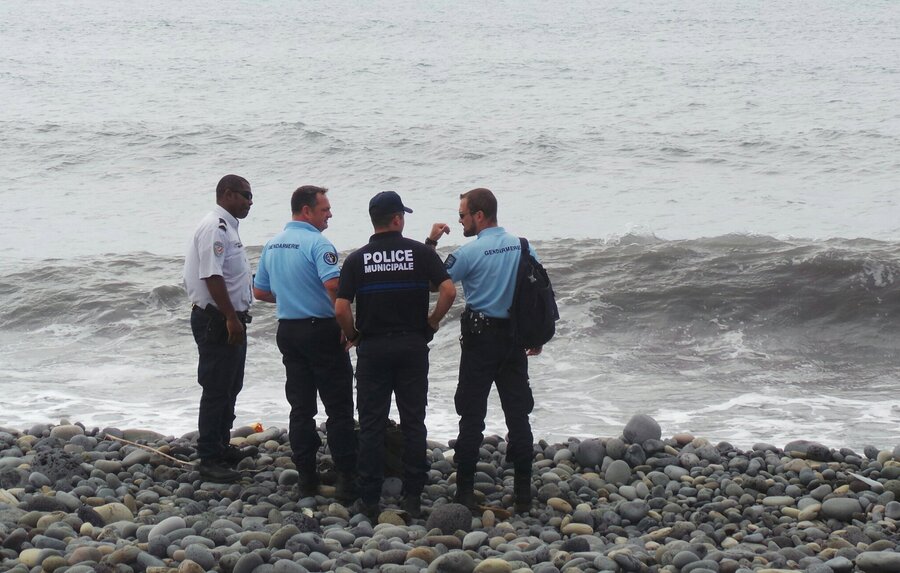MH370 mystery: What clues could recovered debris hold about missing flight?
Loading...
A large chunk of plane debris has turned up on an island in the western Indian Ocean that could belong to the vanished Malaysia Airlines Flight MH370.
The sea-crusted wing part was discovered washed up on the French island of Réunion. Air safety investigators have identified it as a “flaperon” from the trailing edge of a Boeing 777 wing, a US official told the Associated Press. Flight MH370 is the only Boeing 777 known to be missing.
Island officials have emphasized that the source of the debris has not been identified, and it is not still clear with certainty that it belongs to Boeing 777.
However, Aziz Kaprawi, Malaysia's deputy transport minister, told the AP that he was "almost certain" that the debris came from a Boeing 777, and that confirmation could come in "less than two days."
Flight MH370 disappeared on March 8, 2014 while traveling from Kuala Lumpur to Beijing with 239 passengers on board. The search for the missing plane has been ongoing for the past 16 months. A massive multinational search effort of the southern Indian Ocean, the China Sea, and the Gulf of Thailand has turned up no trace of the plane.
The flaperon is about 6 feet long and has a number on it which could be a maintenance number that may help investigators to identify the plane type, according to Warren Truss, transport minister for Australia, the country that leading the search.
"It's the first real evidence that there is a possibility that a part of the aircraft may have been found," Mr. Truss told the AP. "It's too early to make that judgment, but clearly we are treating this as a major lead."
The piece could potentially offer clues as to how the plane crashed, but given the complexity of the currents it is not clear whether it will help them locate the rest of the wreckage.
"It's going to be hard to say with any certainty where the source of this was," said aviation safety expert John Goglia, a former member of the US National Transportation Safety Board. "It just confirms that the airplane is in the water and hasn't been hijacked to some remote place and is waiting to be used for some other purpose.... We haven't lost any 777s anywhere else."
Flight MH370 had been traveling from Kuala Lumpur to Beijing, but investigators believe that the plane turned south into the Indian Ocean after vanishing from radar.
The last primary radar contact with the flight showed its position over the Andaman Sea about 230 miles northwest of the Malaysian city of Penang. Réunion is about 3,500 miles southwest of Penang, and about 2,600 miles west of the current search area.
This report includes material from the Associated Press.






